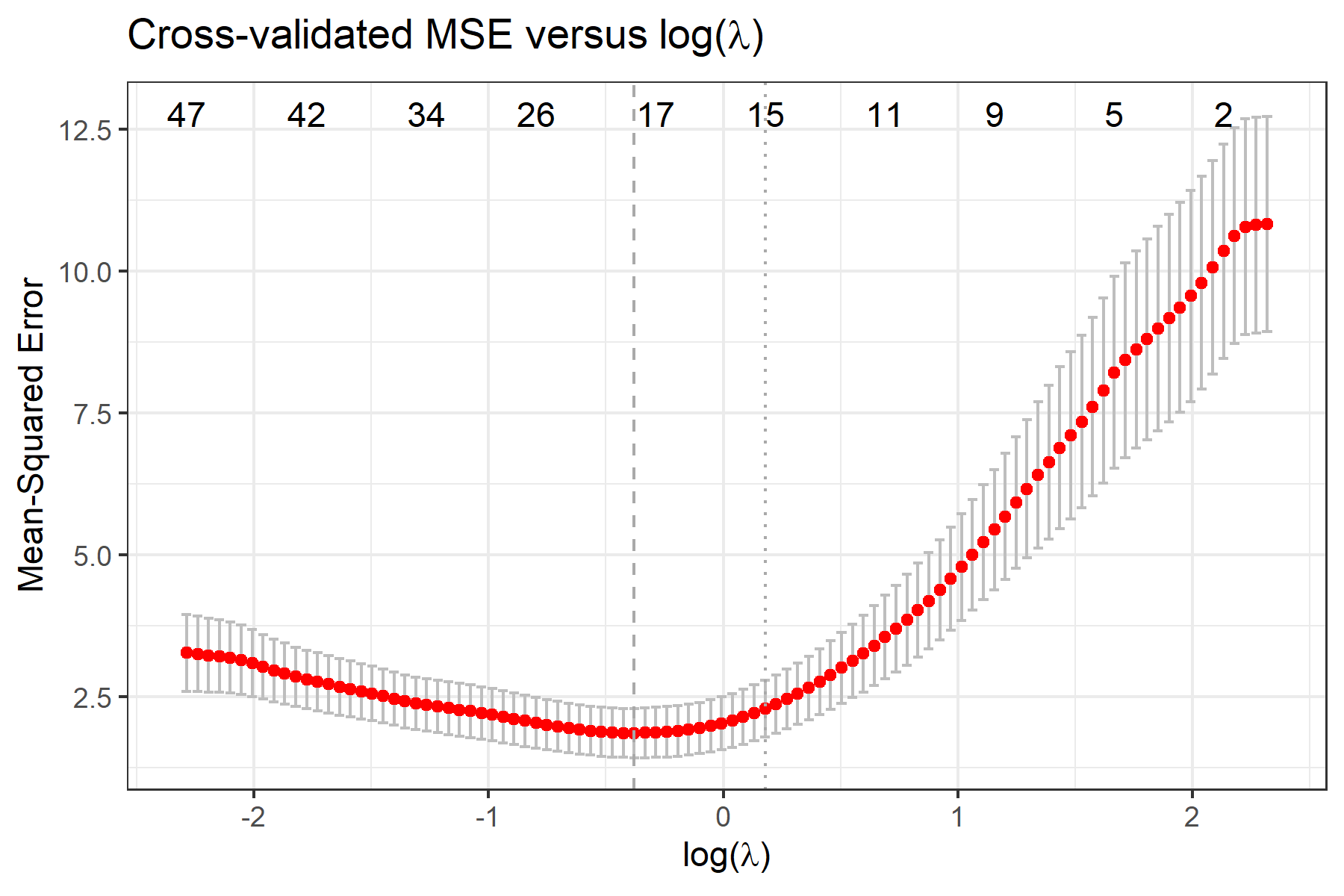

The FLORAL package is an open-source computational tool
to perform log-ratio lasso regression modeling and compositional feature
selection for continuous, binary, time-to-event, and competing risk
outcomes. The proposed method adapts the augmented Lagrangian algorithm
for a zero-sum constraint optimization problem while enabling a
two-stage screening process for extended false-positive control.
The associated article for FLORAL is available on Cell Reports
Methods.
The current version of FLORAL (0.5.0) was built in R
version 4.4.2. R package dependencies can be found in the
DESCRIPTION file.
You can install FLORAL with the following code. The
installation is typically complete within minutes.
install.packages("FLORAL")You can also install FLORAL using conda:
conda install -c bioconda r-floralYou can install the development version of FLORAL from
GitHub with:
# install.packages("devtools")
devtools::install_github("vdblab/FLORAL")Here is a toy example for linear regression with 10-fold
cross-validation for a simulated data with 50 samples and 100
compositional features. Option progress=TRUE can be used to
show the progress bar of the running algorithm.
The data simulation procedure is described in the preprint. The expected run time for the following demo is about a minute.
set.seed(23420)
library(FLORAL)
dat <- simu(n=50,p=100,model="linear")
fit <- FLORAL(dat$xcount,dat$y,family="gaussian",ncv=10,progress=FALSE)To view plots of cross-validated prediction error and parameter
coefficients, use fit$pmse or fit$pcoef:


To view selected compositional features, use
fit$selected.feature, where features are sorted by their
names. Features under min and 1se correspond
to penalty parameter \(\lambda_{\min}\)
and \(\lambda_{\text{1se}}\),
respectively. Features under min.2stage and
1se.2stage are obtained after applying 2-stage filtering
based on features under min and 1se,
respectively.
We recommend interpreting the selected compositional features as potential predictive markers to the outcome in the regression model in the sense that the cross-validated prediction error is improved by considering these selected features.
fit$selected.feature
#> $min
#> [1] "taxa1" "taxa10" "taxa15" "taxa2" "taxa29" "taxa3" "taxa39" "taxa43"
#> [9] "taxa5" "taxa6" "taxa7" "taxa8" "taxa9" "taxa92"
#>
#> $`1se`
#> [1] "taxa1" "taxa10" "taxa2" "taxa3" "taxa39" "taxa5" "taxa6" "taxa7"
#> [9] "taxa8" "taxa9"
#>
#> $min.2stage
#> [1] "taxa1" "taxa10" "taxa2" "taxa3" "taxa43" "taxa5" "taxa6" "taxa7"
#> [9] "taxa8" "taxa9" "taxa92"
#>
#> $`1se.2stage`
#> [1] "taxa1" "taxa10" "taxa2" "taxa3" "taxa5" "taxa6" "taxa7" "taxa8"
#> [9] "taxa9"To get specific log-ratios selected by the 2-stage procedure, use
fit$step2.log-ratios, where min and
1se display the log-ratios between features. For each
identified ratio, min.idx and 1se.idx return
the column indices in the original input matrix for the two
corresponding features forming the ratio.
fit$step2.ratios
#> $min
#> [1] "taxa1/taxa10" "taxa2/taxa5" "taxa3/taxa8" "taxa5/taxa8"
#> [5] "taxa6/taxa9" "taxa7/taxa92" "taxa10/taxa43"
#>
#> $`1se`
#> [1] "taxa1/taxa10" "taxa2/taxa5" "taxa3/taxa8" "taxa5/taxa8" "taxa6/taxa9"
#> [6] "taxa7/taxa10"
#>
#> $min.idx
#> [,1] [,2] [,3] [,4] [,5] [,6] [,7] [,8]
#> [1,] NA 1 2 3 5 6 7 10
#> [2,] NA 10 5 8 8 9 92 43
#>
#> $`1se.idx`
#> [,1] [,2] [,3] [,4] [,5] [,6] [,7]
#> [1,] NA 1 2 3 5 6 7
#> [2,] NA 10 5 8 8 9 10More detailed interpretations can be obtained for the selected
log-ratios. First, the selected log-ratios also improve the
cross-validated prediction errors because these log-ratios are derived
from the constrained lasso estimate. Moreover, as guided by the
association table between log-ratios and the outcome, it is possible to
interpret the directions of the covariate effects associated with
certain log-ratios on the outcome. To view detailed associations between
selected log-ratios and the outcome, use fit$step2.tables
to print summary tables for the multivariable stepwise regression models
obtained by the 2-stage procedure.
fit$step2.tables$minfit$step2.tables$`1se`For binary and survival outcomes, please specify
family="binomial", family="cox", or
family="finegray" accordingly.
dat.bin <- simu(n=50,p=100,model="binomial")
fit.bin <- FLORAL(dat.bin$xcount,dat.bin$y,family="binomial",ncv=10,progress=FALSE)
dat.cox <- simu(n=50,p=100,model="cox")
fit.cox <- FLORAL(dat.cox$xcount,survival::Surv(dat.cox$t,dat.cox$d),family="cox",ncv=10,progress=FALSE)
dat.fg <- simu(n=50,p=100,model="finegray")
fit.fg <- FLORAL(dat.cox$xcount,survival::Surv(dat.cox$t,dat.cox$d,type="mstate"),family="finegray",ncv=10,progress=FALSE,step2=FALSE)Reproducible code for the analyses results reported in the manuscript can be found at this repository.
The FLORAL package is jointly managed by MSKCC
Biostatistics service and the Marcel van den Brink Lab. Please note
that the FLORAL project is released with a Contributor
Code of Conduct. By contributing to this project, you agree to abide
by its terms. Thank you to all contributors!
Fei T, Funnell T, Waters NR, Raj SS, Baichoo M, Sadeghi K, Dai A, Miltiadous O, Shouval R, Lv M, Peled JU, Ponce DM, Perales MA, Gönen M, van den Brink MRM. Scalable log-ratio lasso regression for enhanced microbial feature selection with FLORAL, Cell Reports Methods (2024), 100899; doi: https://doi.org/10.1016/j.crmeth.2024.100899. Epub 2024 Nov 7. PMID: 39515336; PMCID: PMC11705925.